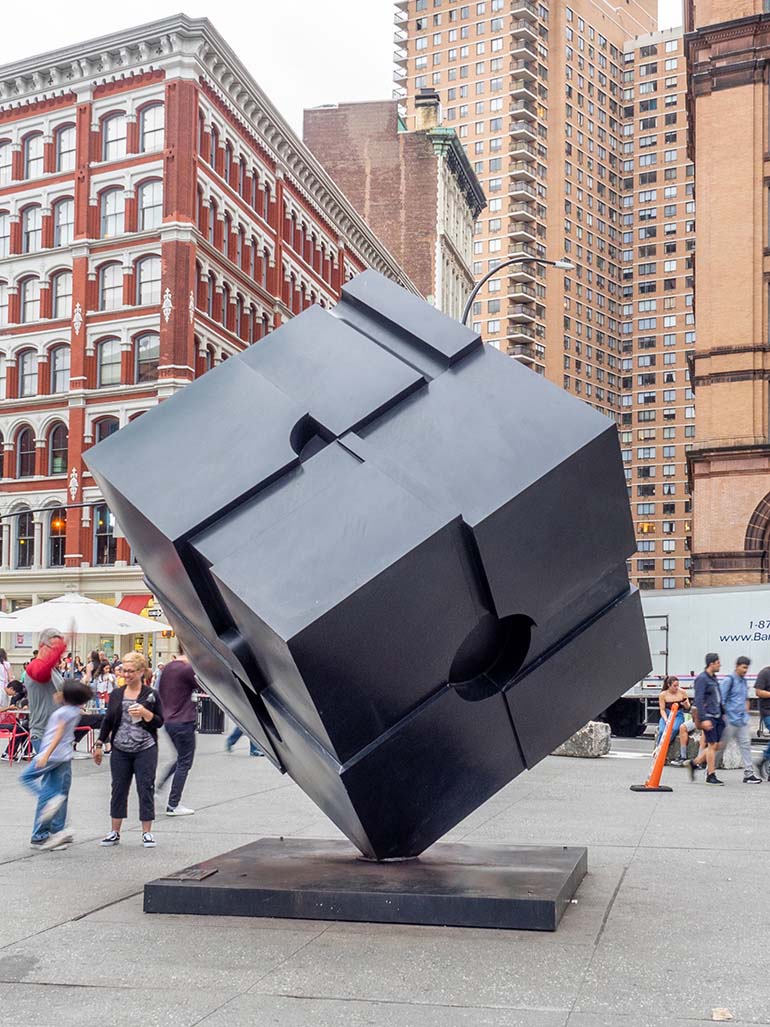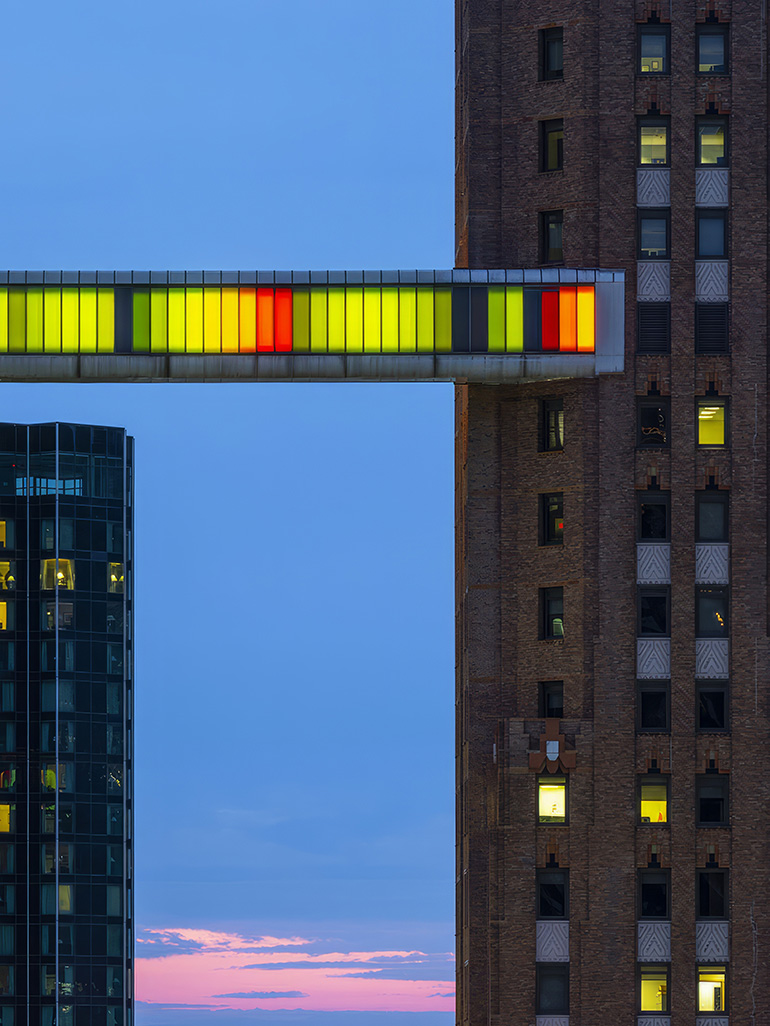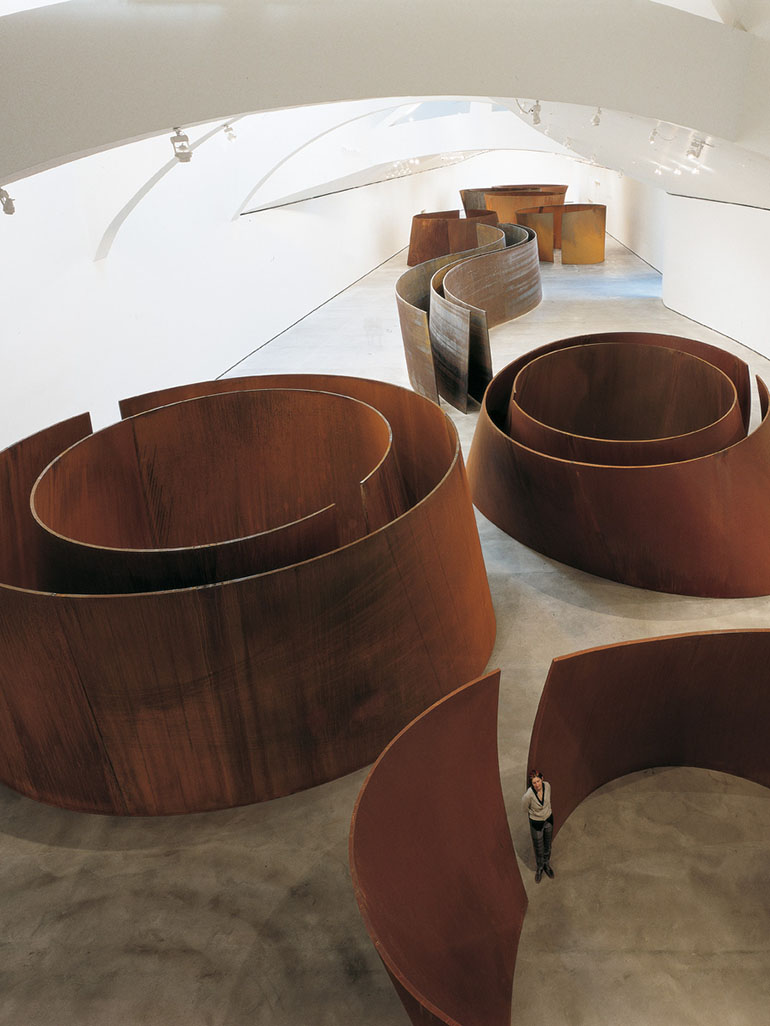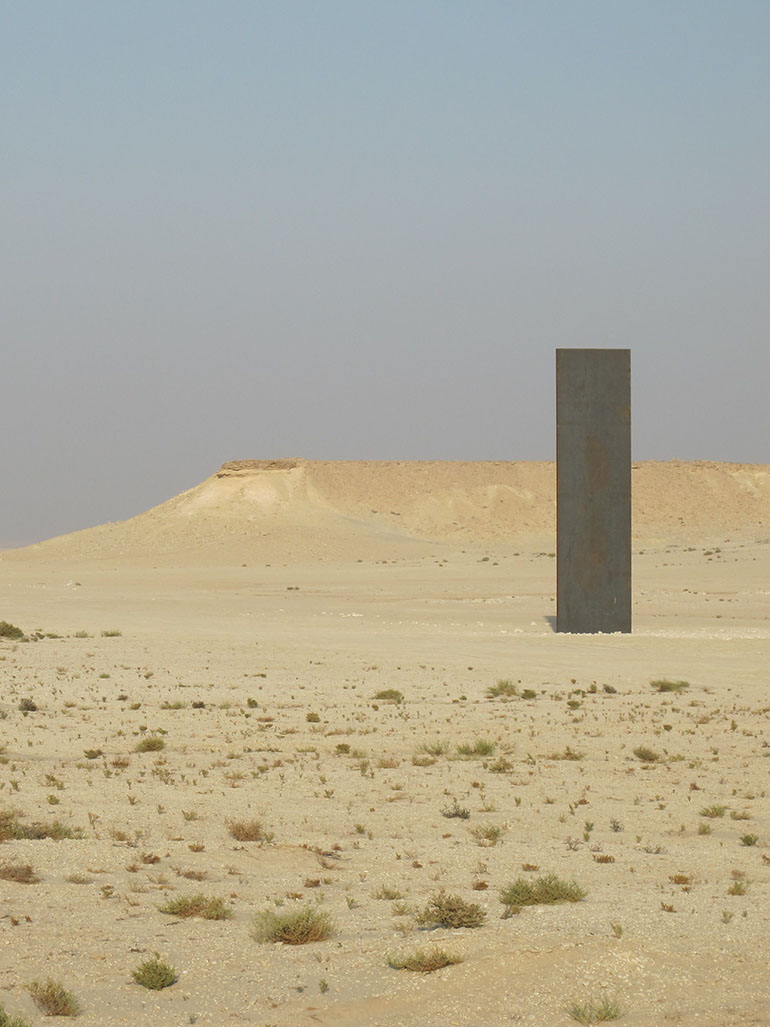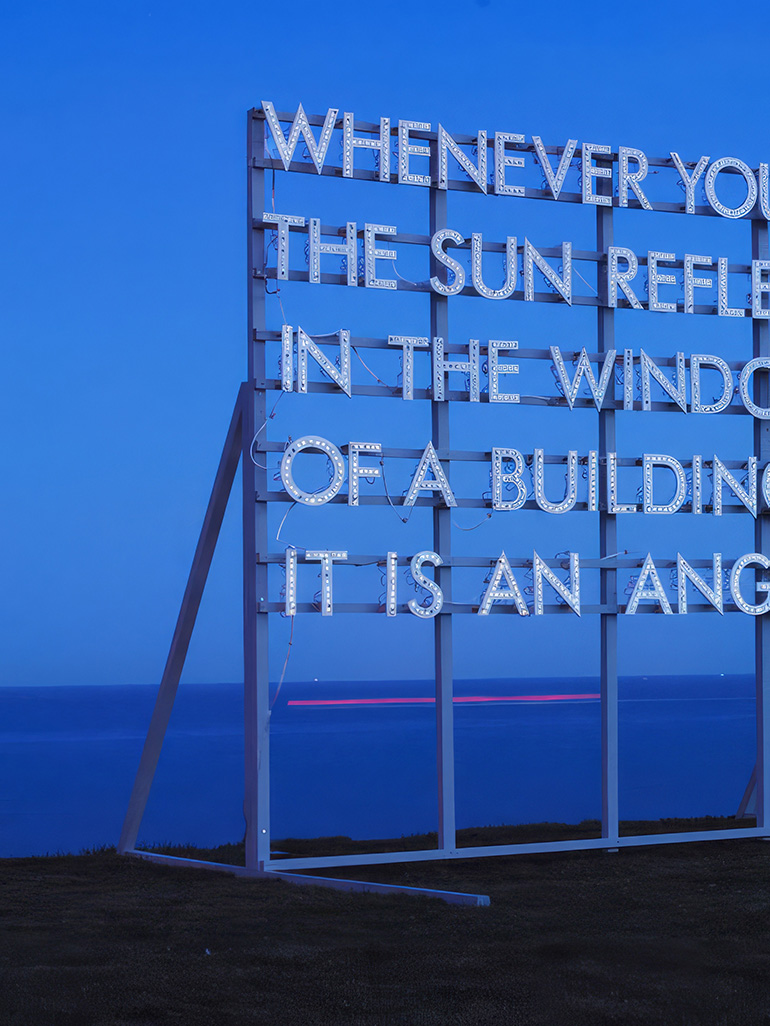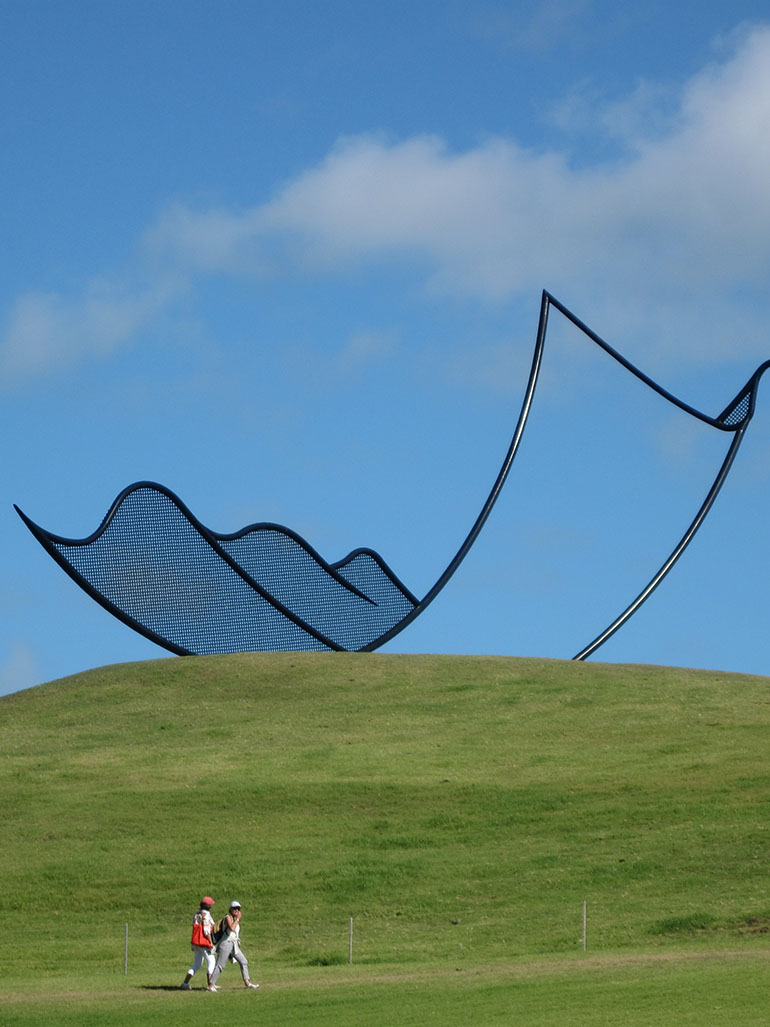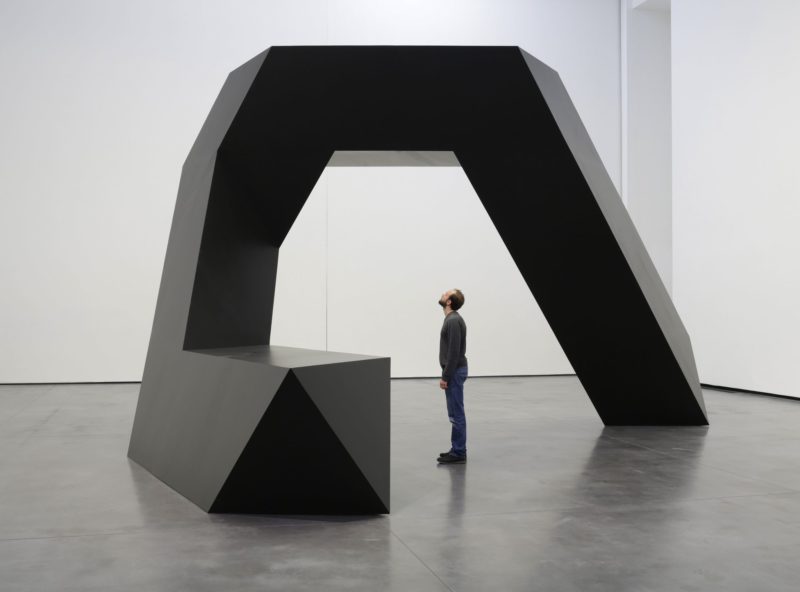
Introduction
Tony Smith 1 was quite the phenomenon back in his day. He was often referred to as the Renaissance man who dabbled in a variety of mediums. Smith successfully included architecture, sculptures, and taking part in art critique.
Sculptures
Although he succeeded in almost everything, he is best remembered for his steel sculptures, which he liked to refer to as steel presences. Smith’s artworks were often made out of thick black industrial steel. They were so heavy that they could easily flatten viewers if they were accidentally knocked over.
Tony started producing sculptures back in the early 1960s based on the idea of three-dimensional arts. He was influenced primarily by Minimalism 2 and Abstract Expressionism, which led him to create his outstanding structures, both large and small. However, he wasn’t always into sculpting. Having received training as an architect, Tony worked in several firms before moving to Germany in 1953 to become a painter.
During his time in Germany, he created the Louisenberg paintings, which comprised mainly of colorful geometric grids of repetitive organic shapes. In many ways, the Louisenberg paintings paved the way for his understanding of sculptural forms owing to their two-dimensional nature. In 1961, Tony was involved in a grizzly accident. During his recovery, he decided to give up architecture in exchange for a career as a sculptor.
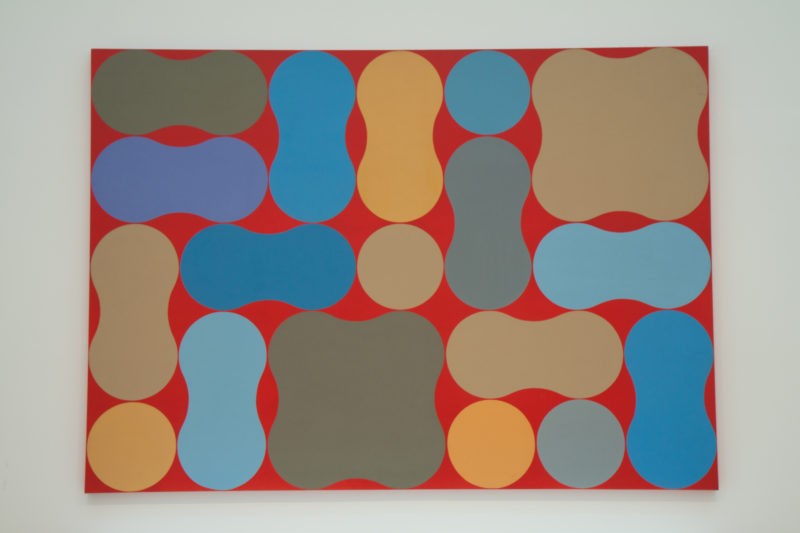
What made his work stand out?
This period of change was marked by developing a distinctive geometric approach that quickly helped to differentiate Tony from other artists at the time. His first projects and sculptures were handmade tetrahedral models taped together before being covered with large-scale 3 plywood shaped and thick black coat of paint.
Most of his consequent pieces, such as The Snake is Out (1962), were created using the same technique. They were done so masterfully that they appeared to have been made from steel and sheet metal. It was not long before Tony made his first sculpture, the Black Box (1962), from steel with assistance from a local commercial fabricator.
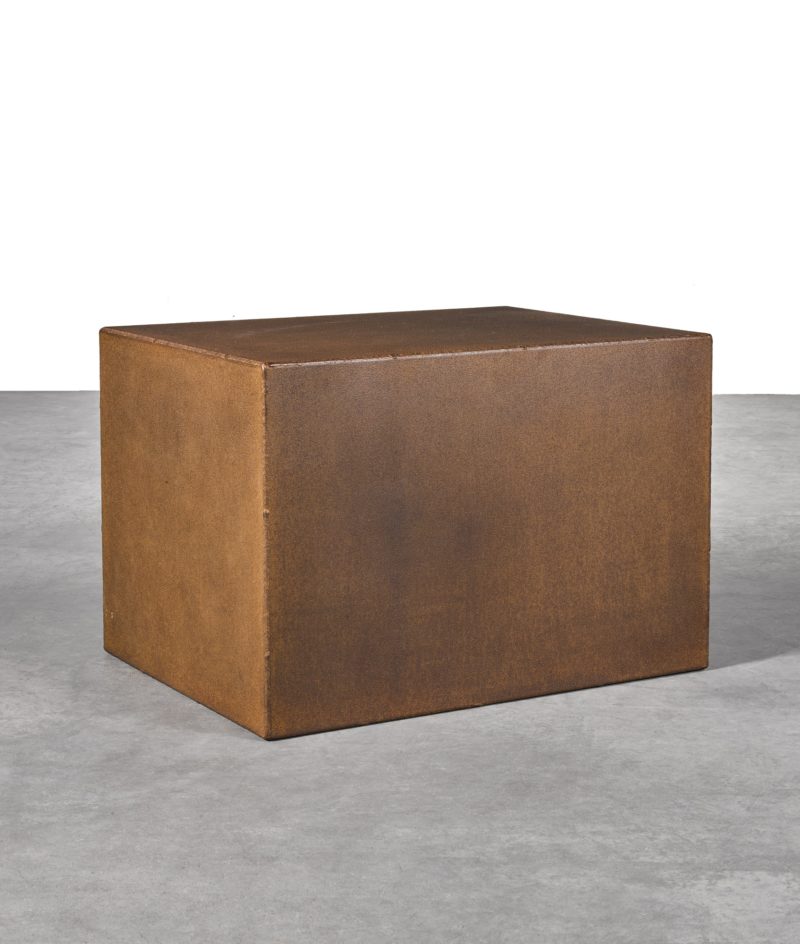
Recognition
Although he began making sculptures professionally in 1962, his work was not exhibited to the public until he turned 52 in 1964. In 1967, he had his first solo exhibition at the Wadsworth Atheneum, which garnered him some attention that resulted in an appearance on the October cover of Time Magazine.
Today, his sculptures can be found mostly outdoors due to their momentous size within private and public museum collections across the world. He was one of the most influential artists of the 20th century.
Smith’s best sculptures
Cigarette, 1961
Cigarette, 1961
Cigarette is one of Tony Smith’s most popular public artworks. It is located on the compound of the Albright Knox Art Gallery in Buffalo, New York. Cigarette is a minimalist piece of environmental sculpture produced by Tony Smith in 1961. The artwork stands over 15 feet tall and is made of flat surfaces of steel in a twisted form. The piece is the first in the series of three sculptures, with one artist’s proof and the other one at MoMA in New York. A miniature version of the work is located on display at the St. Louis Art Museum.
Positioning issues marred the effect of the version of the piece in MoMA grounds, the first being that that spot at the garden had been devoted to one artist. Smith developed his style by exploring matters of scale, material, and geometry of nature in studio models for fabricated sculptures.
Light Up, 1974
Light Up is a colorful steel plate public art sculpture that Tony Smith created and dedicated on May 15, 1974. The piece was installed at the Forbes Quadrangle at the University of Pittsburg, between Posvar Hall, the Barco Law Building, and Hillman Library. The sculpture was missioned by Westinghouse Electric Corporation in 1971 and was initially located in gateway Center in downtown Pittsburg before it was donated to the University of Pittsburg. It was then relocated to the university’s Oakland campus in 1988 and later temporarily recited to the Seagram Plaza in New York City in 1998 for the artist’s exhibition work at the Museum of Modern Art.
The sculpture stands 20 feet and 6 inches high and is usually synonymous with its bright yellow color. The color of the piece marked Smith’s shift from his trademark black color that he used in numerous of his works, including Cigarette. The work fused an octahedron and a tetrahedron into a “continuous space grid,” which “may be seen as an interruption in an otherwise unbroken flow of space.”
Light Up is seen to be a sharp comparison to the environment’s colors and shapes of other architectures in the surrounding. Something described by one writer in contrast to the Ludwig Mies van der Rohe skyscraper in its temporary New York retrospective setting as being “a jazzy counterpoint to its staid geometry.”
Some critics believe that Smith’s intention, for its original setting, was to liven up its surroundings and maybe also the attitudes of the walk-by viewers.
Moondog, 1964
Moondog was created in 1964. It comprises 15 elongated octahedrons as well as 10 tetrahedrons. Though the sculpture appears perfectly ordered and symmetrical when watched from particular angles, it carries a tilt forward when seen from other perspectives. The strange title of the piece is a reference to Joan Miro’s painting titled Dog Barking at the Moon and the name of the blind composer and poet, Moondog.
Though rare in a natural setting, regular geometries do exist in nature. Tony Smith himself studied the growth of crystals, and he once based an architectural design on the shapes of the honeycomb.
The form of the artworks was inspired by a portrait of a tiny jade house, and Tony Smith translated it in so many ways, including a Korean garden lantern and a human pelvis. After creating the first version of Moondog in 1964 as a 33-inch cardboard prototype, it was later cast in bronze as a yard sculpture in 1970.
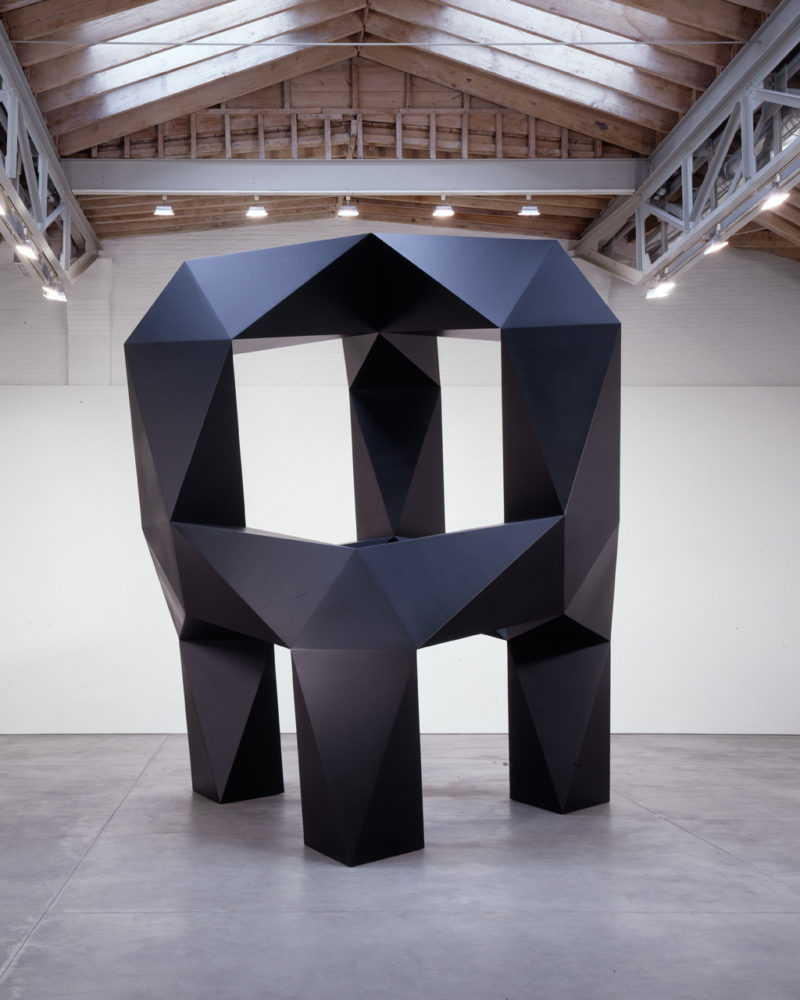
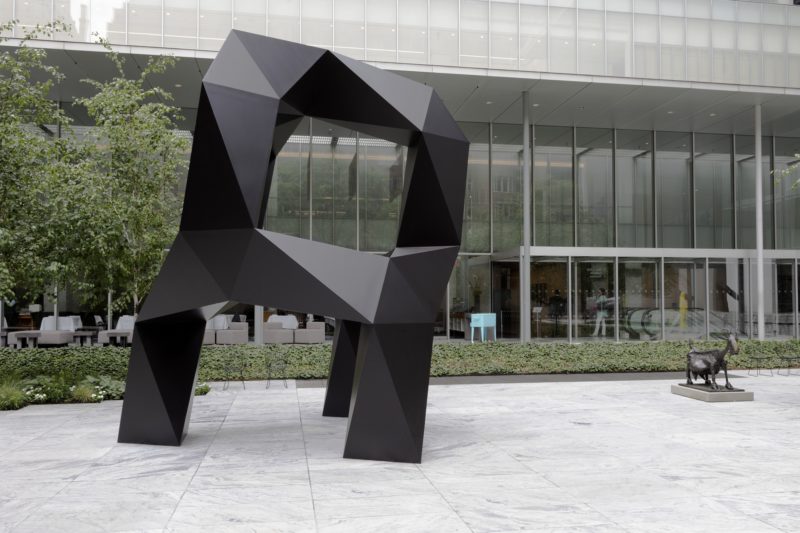
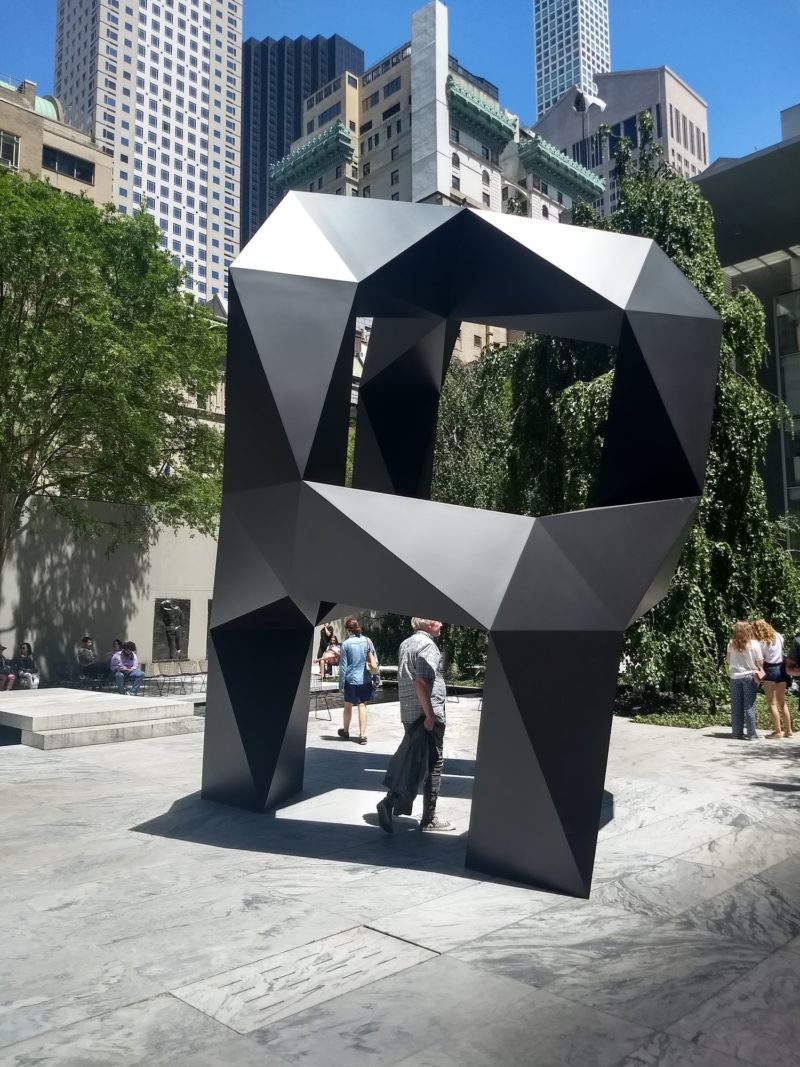
Smog, 1969–1970
This pubic artwork is located to the southeast of McCardell Bicentennial Hall on the Middlebury College in Middlebury, Vermont. Just like other sculptures by Tony Smith, Smog is also a minimalist sculpture. The work is a lattice of 45 octahedrons sitting on 22 tetrahedrons and topped with 15 prisms. The piece is fabricated from aluminum and coated in black paint and is the first in an edition of three, one being artist’s proof.
The installation of the piece was commissioned by the estate of Tony Smith to Lippincotts, LLC, and was fabricated by WeldingWorks Inc. of Madison, CT, in 2000.
The piece was derived from Smoke, a vertically oriented painting at Corcoran Gallery of Art in 1967. Smith re-worked the forms from vertically to horizontally oriented and titled it Smog. The piece has been recreated on a smaller scale in cast bronze with a dark patina. It is the largest and the most complex piece ever created by Tony Smith. The Community on Art in Public of Middlebury College acquired this sculpture.
Source, 1967
Source is located in the Cleveland Museum of Art Donna and Stewart Kohl Sculpture Garden, Cleveland, Ohio. The piece is fabricated from steel and painted black, and constructed from two separate pieces bolted together.
The Source at the Loue by Gustave Courbet inspired the title of this sculpture. It is the first of an edition of three pieces; the second is owned by the artist’s estate, and the third has yet to be fabricated. It was acquired in 2001 by the Cleveland Museum of Art.
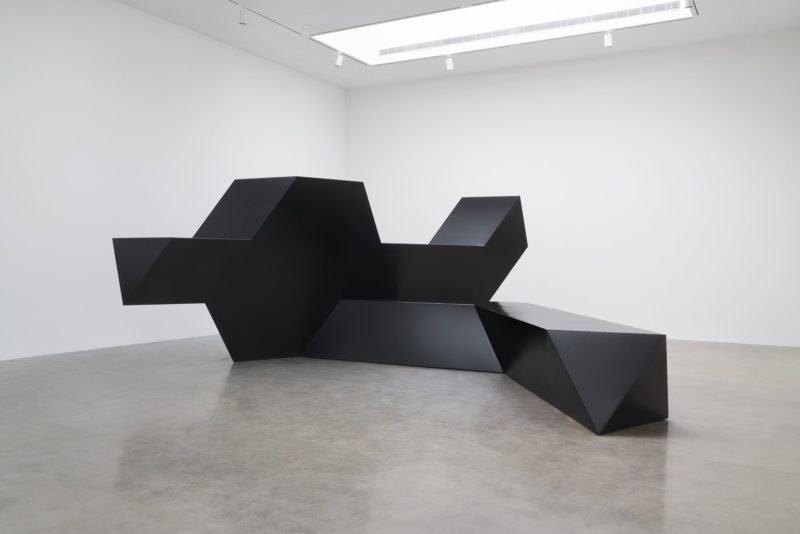
Stinger, 1967–1968
Stinger was installed at Olympic Sculpture Park in the suburbs of Belltown in Seattle, Washington. The piece was donated to the area by Smith’s family. Though the sculpture was made 19 years after the artist died, it is attributed to him. The reason for this being that the original artwork was finished in 1968. It was made of plywood despite Smith wanting it to be made of steel.
The sculpture was initially titled One Gate but renamed Stinger, a name inspired by the cocktail that was trending when the piece was made.
Stinger consists mainly of a large square metal frame with numerous edges and an entrance on one side. The original piece was made of plywood.
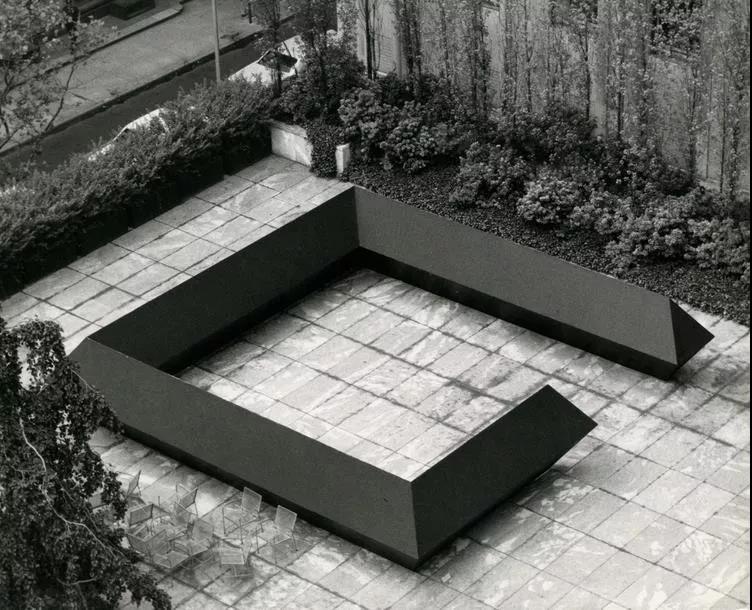
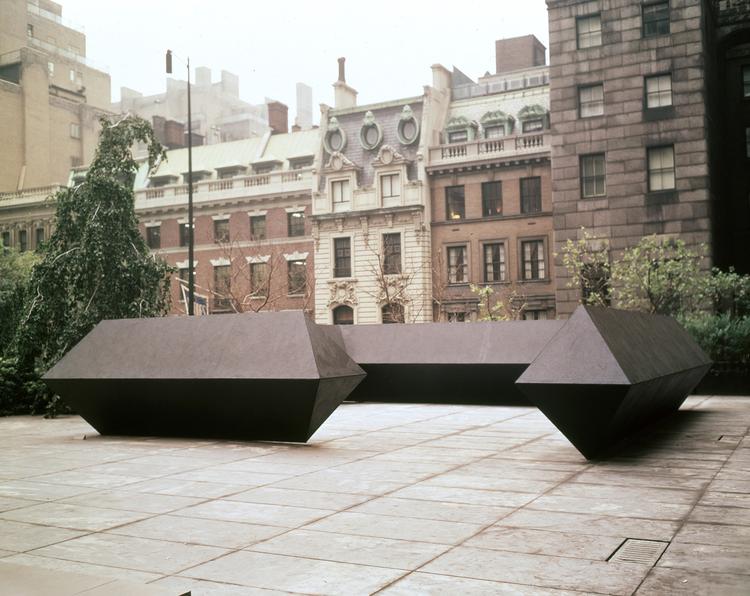
Throwback (3/3), 1976–1979
Throwback is made of aluminum sheets welded together at particular angles to form a geometric, 4-sided, hollow, elongated ring. The sculpture is painted with a black fluoropolymer to achieve its lusterless finish.
The third edition of the series is situated at the Hirshorn Museum and Sculpture Garden, Washington, D.C, United States.
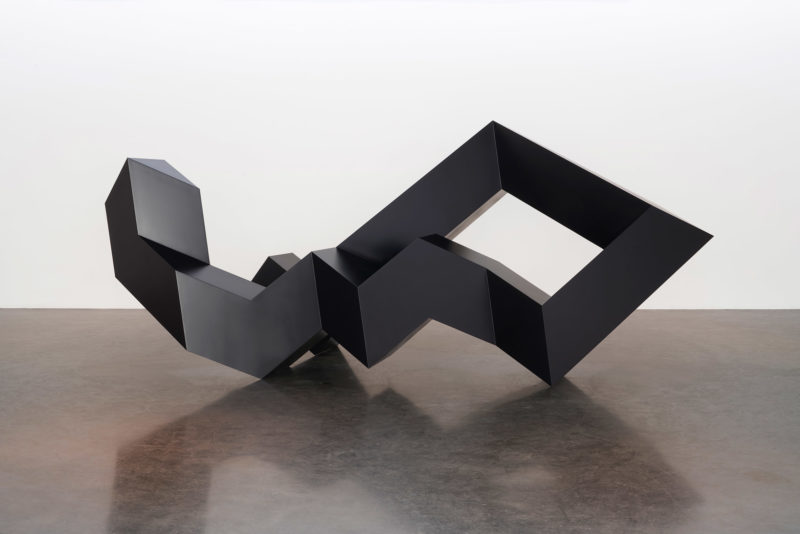
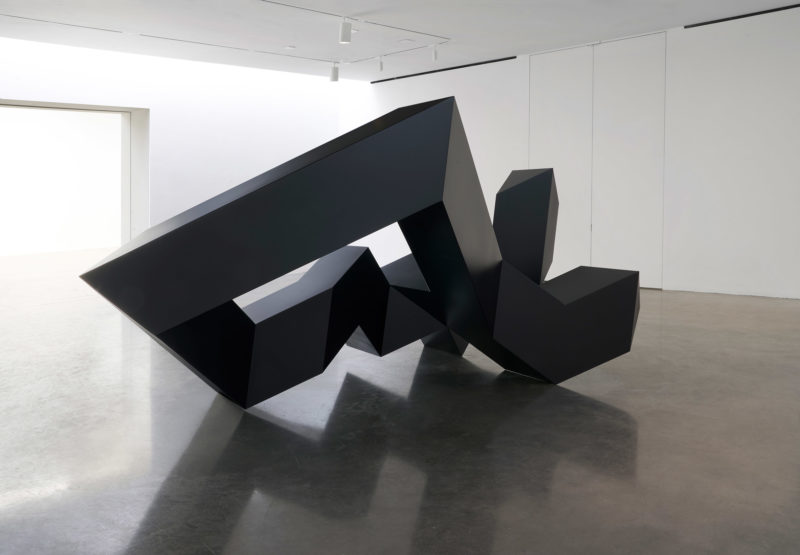
Final Thoughts
If these sculptures tell us something, it is that Tony Smith contributed much to the inception of minimalism. Yet, in the world of art, he still remains somewhat of an unusual figure, often occupying a peripheral role concerning the movements he was primarily associated with and only exhibiting as an artist late in his life.
